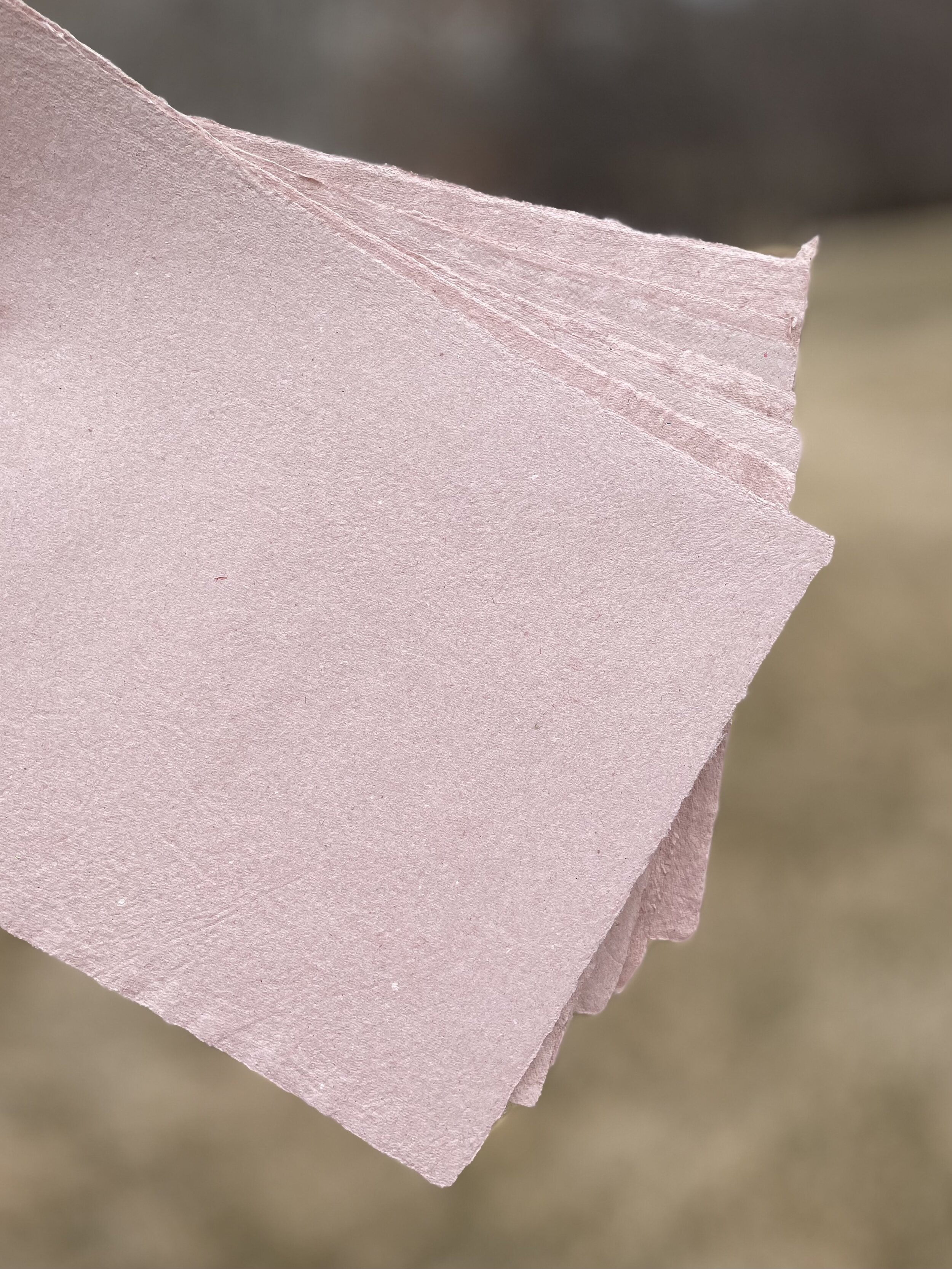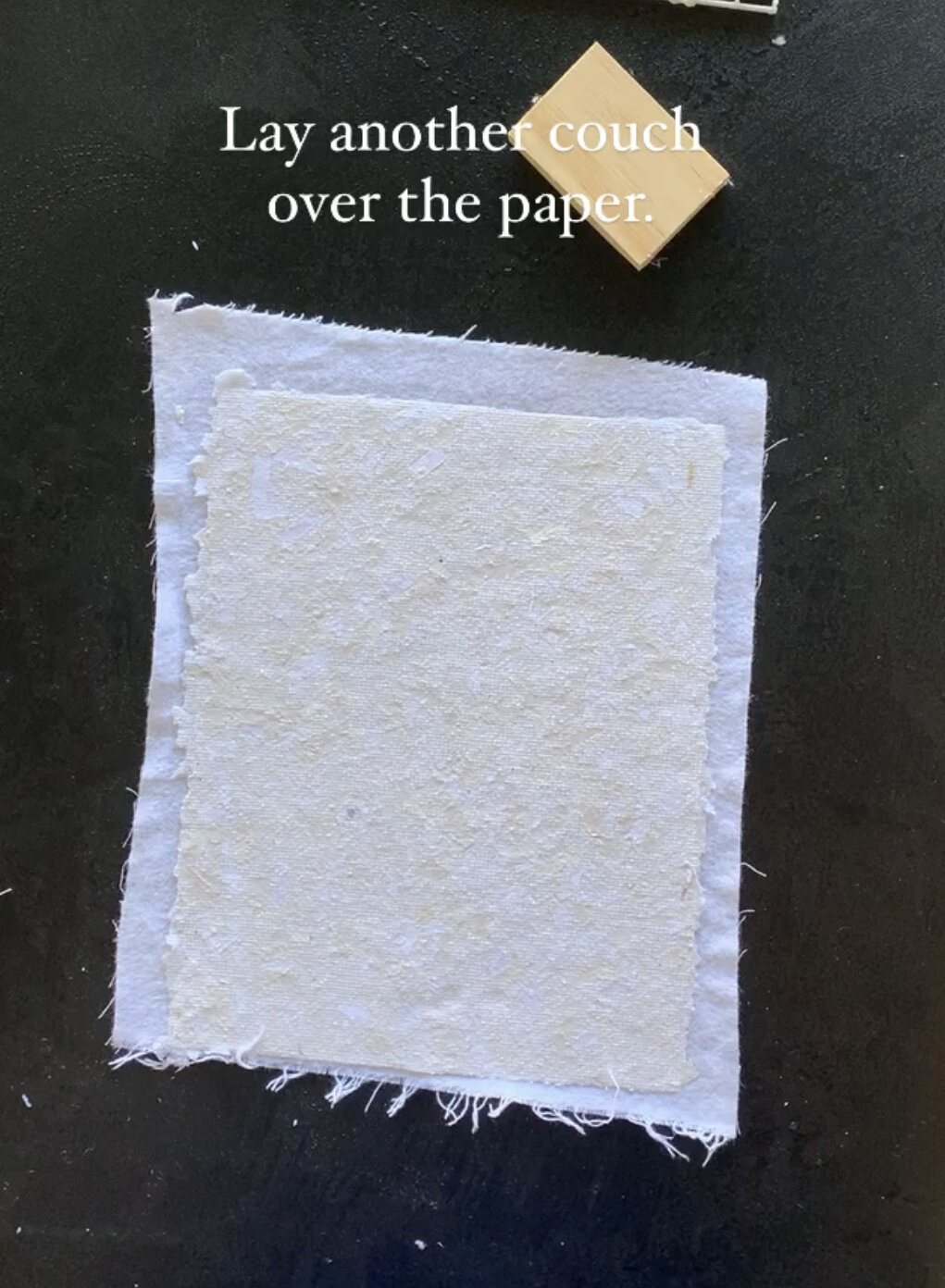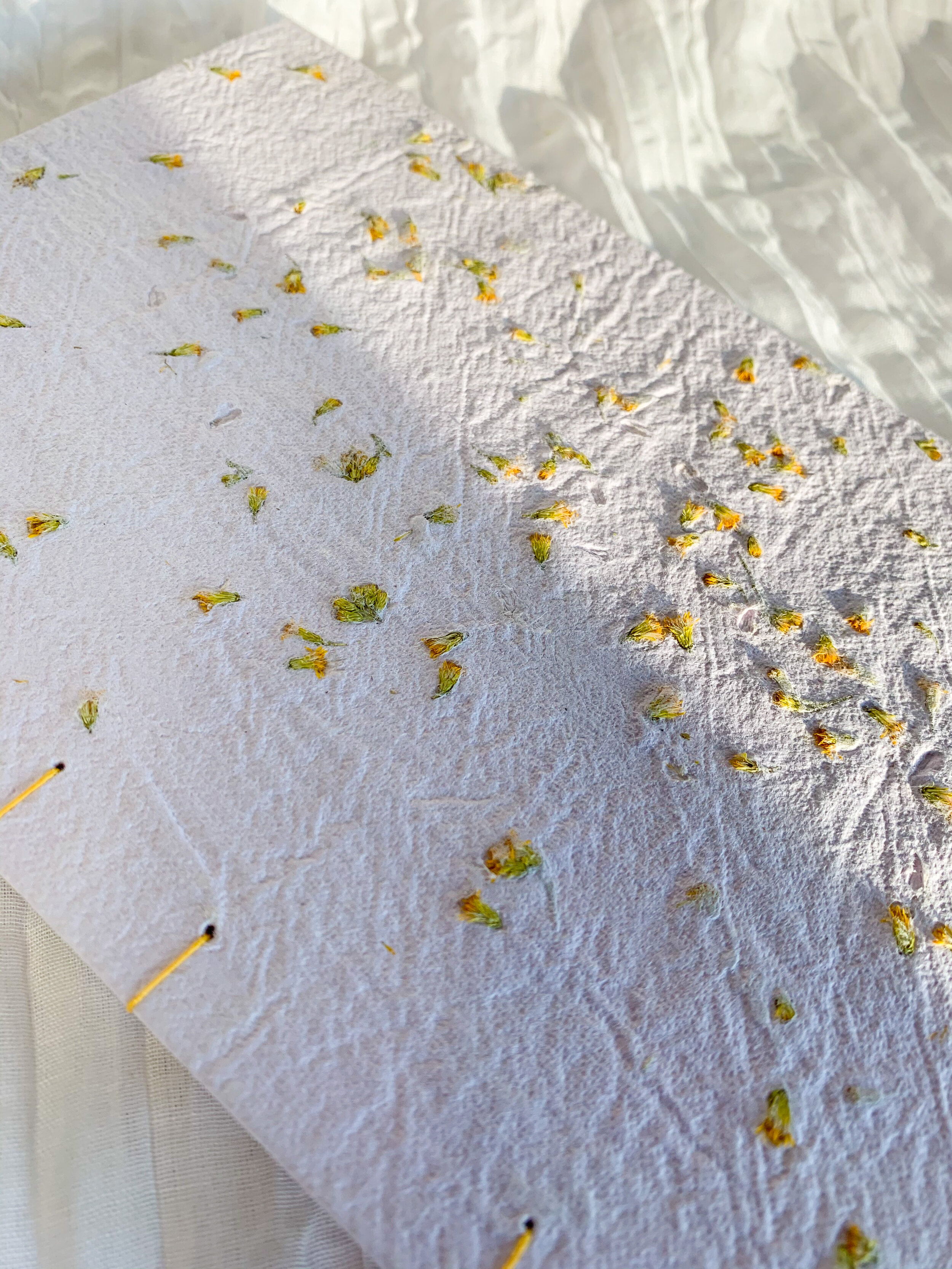Chasing Texture on Handmade Paper
Texture is all around us. Every physical thing in our world contains texture, and paper is no different.
Most people have probably never considered the texture of paper. But texture is one of the key attributes of a piece of handmade paper. Texture is what makes a piece of handmade paper unique, compared to its machine-made counterpart.
My journey into papermaking is coming to the one-year mark and texture has been one of the main drivers of change in my process. As the title of this post suggests, I’ve been chasing it, on the hunt for the perfect smooth texture that makes both writing and art seamless.
But it’s been a long journey to get to the point of creating a perfectly smooth sheet. Nothing about papermaking has been easy, and creating texture has been one of those ever-present challenges.
Keep reading to recap the journey with me, and discover all the different ways I’ve attempted to create texture in my paper.
How Handmade Paper Gets Its Texture
To understand how handmade paper gets its texture, you first need to understand the basic process of making paper. First, you form sheets using a mould and deckle. After the water has run off the mould and deckle, you flip it upside down and press the newly-formed sheet onto a couching sheet (or piece of fabric). Then, you press the water out of the paper with a sponge and lift off the deckle. From here, the paper can be pressed further and/or dried.
Paper starts to get its texture during the two parts that are bolded. Any time a piece of handmade paper touches a surface, it will get imprinted with that surface’s texture. Using couching sheets (or linens) in the process of papermaking is unavoidable, so carefully choosing the material for this process is critical, especially if you’re trying to achieve a certain texture on your final sheets.
Making Textured Handmade Paper
In the year or so that I’ve been making paper, I’ve experimented with a few different types of couching sheets, or linens. They all have their own merits, and some work better than others. I’m going to recap them all—for the sake of documenting my journey—but if you’re anxious to see what worked best, scroll to the last item in the following list!
Flannel?
First was the material that came with the papermaking kit I ordered. The kit provided me with the essentials for getting started, including four pieces of cloth to couch sheets onto. I’m not sure exactly what type of material it was, but perhaps it was flannel? It will remain a mystery. As I was just getting my feet wet with papermaking, the flannel worked fine for a first time papermaker. However as I learned more about the papermaking process, I soon realized four couching sheets was not going to last me very long and I needed to find more. So the hunt for the perfect couching sheet began.
Flour Sack Towels
The next material I tried was, quite frankly, terrible. I don’t know what I was thinking—but hey, this is how we grow! I decided to try using flour sack towels, which is what I grew up drying the dishes with. At the time, I thought these would be perfect since I could cut one towel down to the right size and get many couching sheets quickly, while being very cheap.
What actually happened was the edges frayed when cut, since the cloth was such a loose weave. This resulted in many many strings hanging off the edges and getting stuck to the face of each couching sheet. And if you recall, wet handmade paper takes on the texture of whatever it’s pressed against, which meant that these tiny strings created little indents wherever they appeared. On top of this, the material as a whole became very wrinkly over time, which also affected the texture of the dried sheets.
FLOUR SACK TOWELS You can see on this paper that texture is achieved two ways. First, through the flour sack towels—all of those divots and bumps on the purple sheet. Second, through the use of adding a botanical element into the pulp. These sheets were very textured and I was able to use them to create bespoke journals.
Polyester Felt Alternative
At least the experience of using flour sack towels led me to think more critically about my couching material. After dealing with the insanity of trying to manage the strings and the wrinkles, I turned my attention to a more professional couching material called “polyester felt alternative” from Carriage House Paper, a supplier of papermaking equipment and tools. This material worked well overall. I immediately could see a difference in the texture and quality of the final sheets. The dried paper was very smooth after being pressed against the felt alternative, and the best part was that the material didn’t fray when cut and was durable. All in all, I was satisfied with this choice, except that it was on the expensive side.
Fleece
Even though the felt alternative worked well, I knew I would need a lot of it to create drying cloths. I was also preparing to create a dry box, which required the same or similar type of material to facilitate the drying process. I was on the hunt for something that was less expensive than the polyester felt but still produced a smooth sheet while being durable. So I turned to fleece. I bought many yards of fleece from Wal-Mart and cut these into couching sheets and blotters for the dry box. Finally, I thought, I’ve found a material that was cost effective yet would produce smooth sheets! Bonus points for being able to go in the washing machine.
And the fleece did work well. It didn’t produce the super smooth texture of the polyester felt, but it was smooth enough. For a while, this is the material I settled on. But I soon started to notice that the final paper coming out of the dry box was fuzzy; literal fuzz clung to the surface of the dried paper. I was perplexed, and then realized that fleece in general is a very fuzzy material. The fleece fuzz was sticking to the damp sheets and staying stuck even after the sheets were fully dry. Obviously, this was a problem and would prevent me from ever selling my paper. So, the search for the perfect couching/drying material continued.
FLEECE This is clearly not a perfectly smooth sheet, but the texture is reminiscent of what you might find on watercolor paper or other fine art paper. I do like this texture. It’s more subtle and consistent, making it suitable for both writing and art.
Pellon
If you’ve made it this far, then I’ll let you know that this is where the couching material journey ends (finally!). Because after some research, I discovered that the “polyester felt alternative” from Carriage House Paper is actually Pellon. Pellon is a type of interfacing used mostly in sewing craft projects. It is used to help stabilize clothing designs, but it also makes the perfect (and I mean perfect) material for couching. As mentioned previously, it’s smooth, durable, and doesn’t fray when cut. You can use the same sheet of Pellon for couching over and over again (though you do need to brush the excess dried paper off each sheet, which can be time consuming). In discovering what the “polyester felt alternative” is called, I was able to find the same material at a different outlet that was more cost effective than the papermaking store. So, win-win.
The Papermaking Journey
This craft is seriously all about the journey. In my year of papermaking, I have learned so much about the craft as a whole, and that includes loads of experimentation with different types of couching materials. In the end, it doesn’t matter so much what type of couching material you use, so long as it’s what makes you happy. I have been aiming all along for a more smooth sheet, but the highly textured sheets from when I was using flour sacks are equally as unique and valuable.
Chances are, I’ll continue to experiment with texture in my handmade paper in some way or another. I will continue to use Pellon, but perhaps I will use other couching materials for special, textured batches. Time will tell! For now, I’m just going to keep running my hands over the perfectly smooth sheets I’ve made in recent weeks, and be happy that I’ve come this far.





